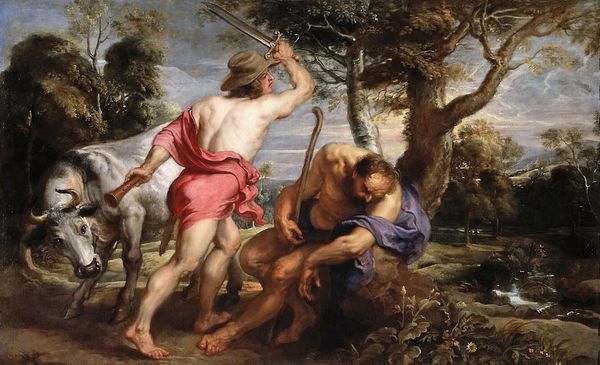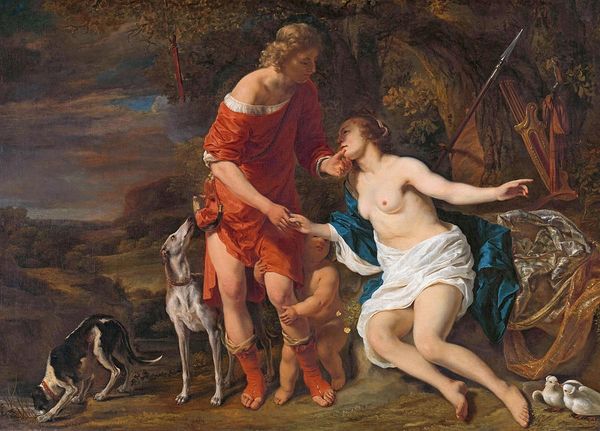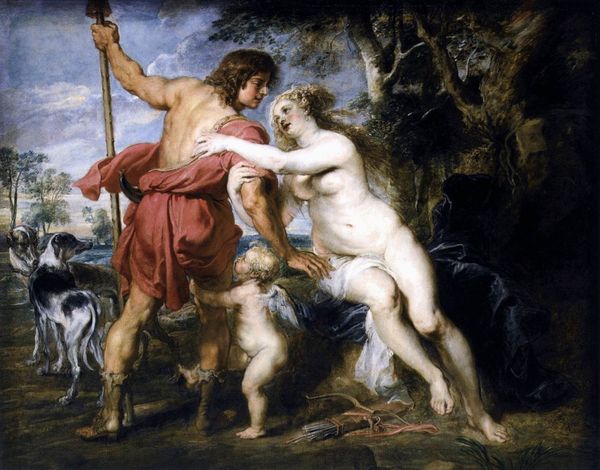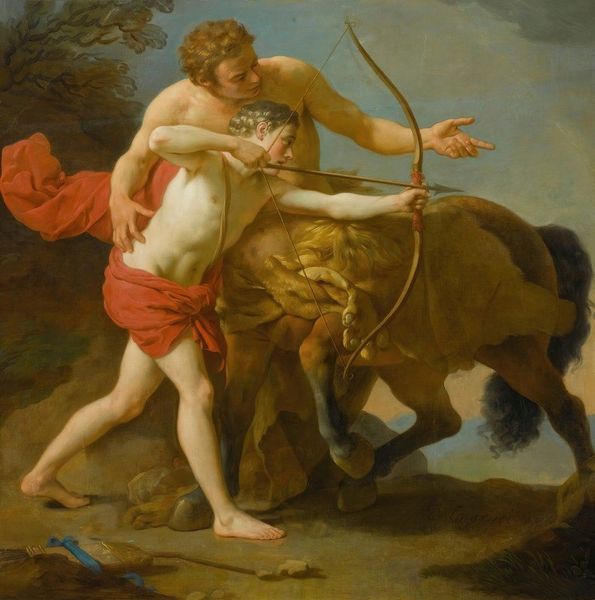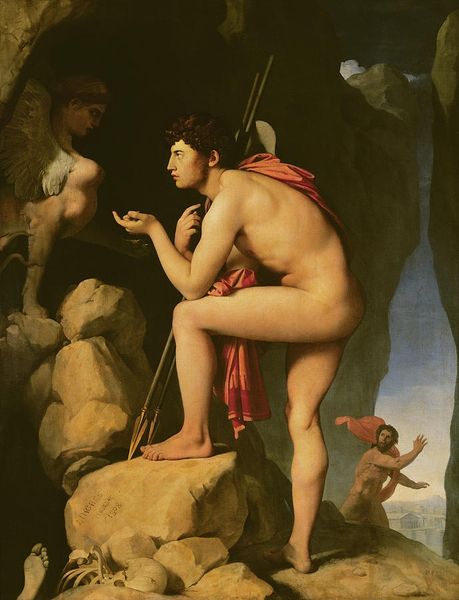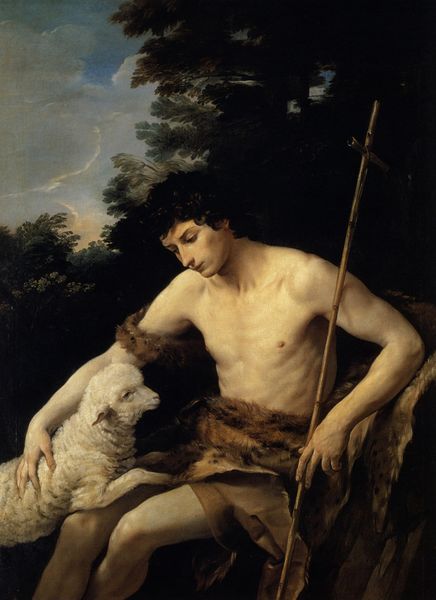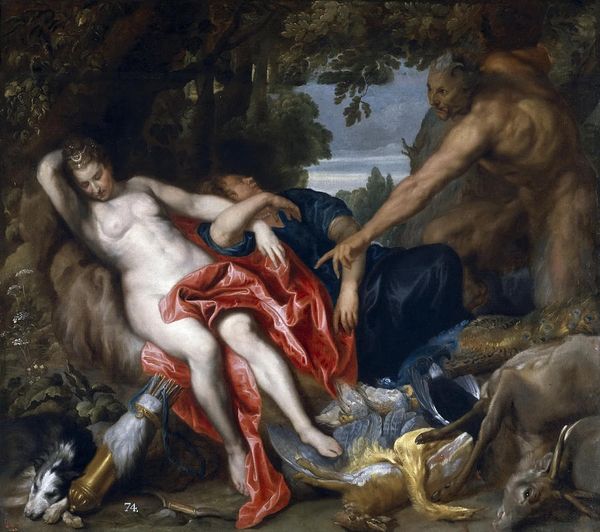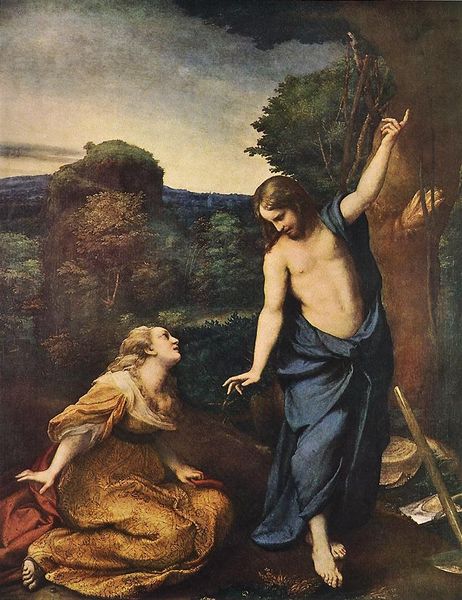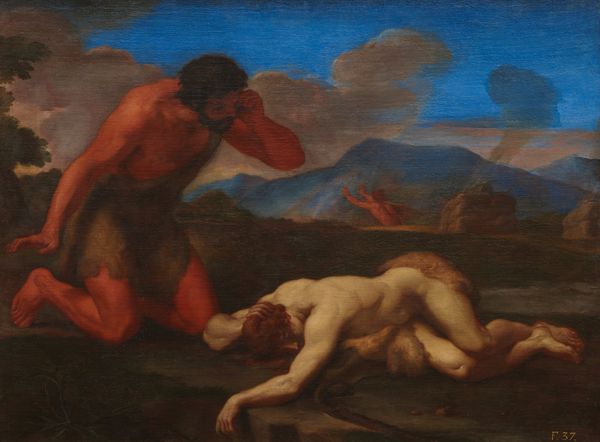
oil-paint
#
portrait
#
baroque
#
oil-paint
#
landscape
#
figuration
#
oil painting
#
history-painting
#
portrait art
Copyright: Public domain
Curator: Looking at "Saint Jean Baptiste," crafted around 1630 by Johannes Moreelse, I'm struck by the intense physicality of the subject in contrast with the spiritual overtones. What are your immediate thoughts? Editor: The dramatic lighting immediately grabs my attention. It creates a compelling tension between the darkness of the cave and the illuminated figure of John, heightening the work’s emotional resonance. Curator: Indeed. Let's consider the context. The painting exists within a very specific production landscape of 17th century Dutch painting and its religious patronage. I wonder, is it possible to discuss Moreelse's position and socio-economic status, including who purchased his artworks and how those transactions might affect the art itself? Editor: That’s a relevant question. Moreelse painted this piece, one imagines, for a patron or for placement in a church to inspire viewers toward religious devotion and contemplation. Baroque art often served this didactic, almost propagandistic function. How does the visual rhetoric of the work – its composition and figuration– contribute to its broader public reception? Curator: I'm compelled by the materiality – the very stuff of paint manipulated across the canvas. I wonder, to what extent might our perception shift if we examined how the source and quality of his pigments might connect to larger issues of trade? Or, to what extent did the workshop and apprentices affect the image’s construction, complicating notions of individual authorship? Editor: Such an examination would certainly enrich our understanding. Thinking about this work as an agent within the history of art institutions: this painting exists today in this particular museum. Considering where it's hung, who curated it, what labels accompany it – all of these things significantly affect our viewing experience and, by extension, its historical footprint. Curator: So, beyond its religious context, we see the oil-paint work existing as both a physical artifact shaped by tangible production processes and also a vessel molded by prevailing cultural trends, accessible or not. It adds depth to what initially strikes one as simply a representation of a religious figure. Editor: Exactly. The interplay between art and audience is ever evolving, it shapes not just the perception but also the very narrative of a painting. Curator: Thank you, that perspective enhances our dialogue considerably, providing an important reminder of just how influential context truly is when viewing an image like Saint John the Baptist.
Comments
No comments
Be the first to comment and join the conversation on the ultimate creative platform.
